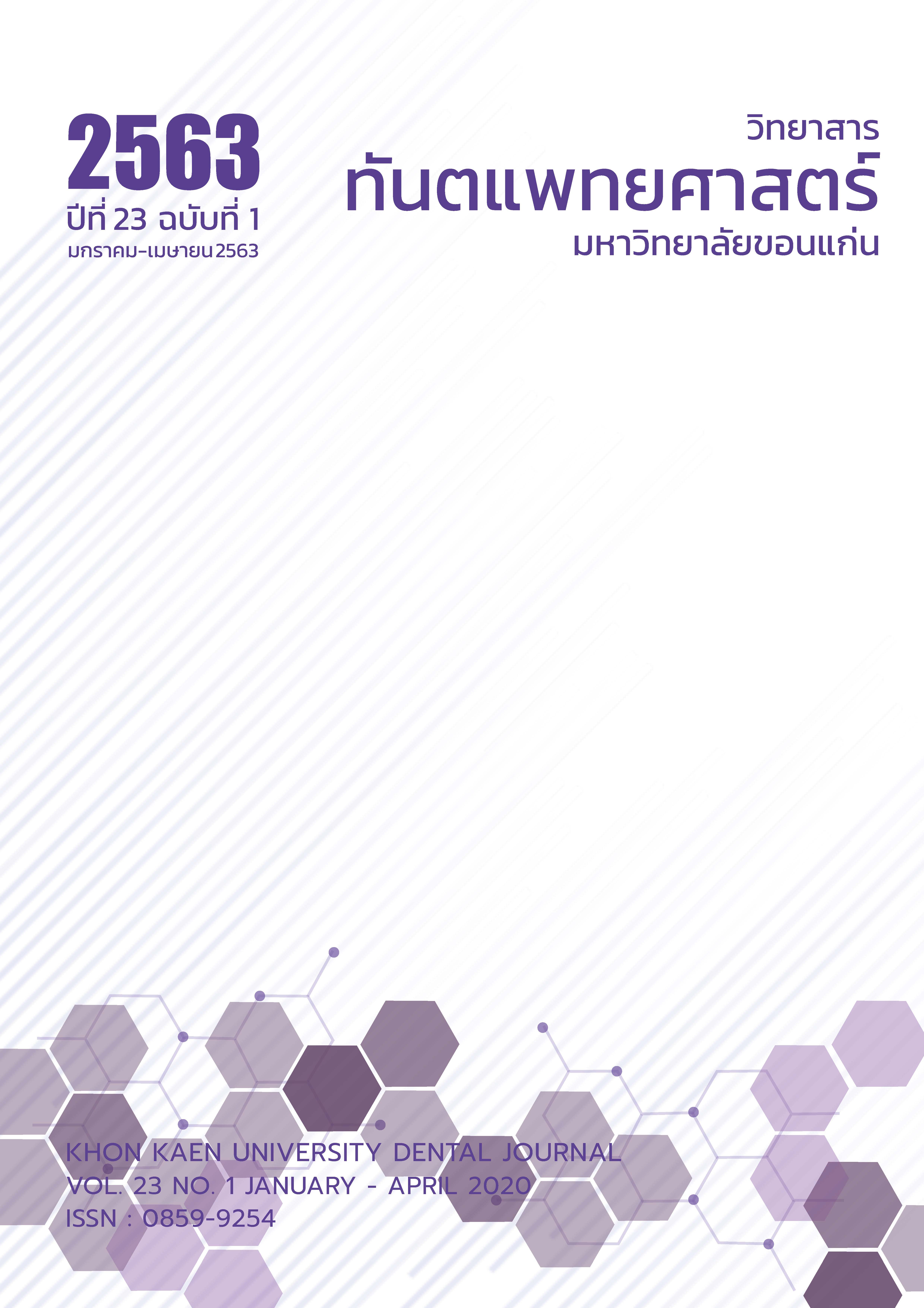Comparison of Peel Pouch Leakage between Continuous Sealing Machine and Hand Sealing Machine
Main Article Content
Abstract
The purpose of this study was to compare the leakage on the peel pouch packages sealed by heat or a continuous sealing machine and a hand sealing machine. The samples included 600 packages sealed with the hand sealing machine and 500 packages sealed with the continuous sealing machine. All the samples contained one glass ball and were sealed 1 inch away from the edge. Then, the samples were sterilized at 121 degrees Celsius with 1.5 bar of pressure for 20 minutes. The samples were tested for leakage by using 0.05% blue toludine which was sprayed along the seal line and 5 millimeters up from the seal. The color was let to coat with the package for at least 5 seconds but no more than 20 minutes. Then, the package was turned so that the color covered the entire seal line. A waterproof pen was used to mark any leakage. When the color dried, the plastic sheet was removed and the color would stick on the leaking holes which were later marked by the pen. The results were read and analyzed with statistics including Chi – square test at 95% confidence level. The results showed that the proportion of leakage on the packages sealed with the continuous sealing machine and the hand sealing machine was statistically significant (P = 0.002), and the difference of leakage ratio was at 1.83 percent (95% CI = 0.76% - 2.91%). In conclusion, the leakage ratio of the peel pouch packages sealed by continuous sealing machine is lower than hand sealing machine.
Article Details
บทความ ข้อมูล เนื้อหา รูปภาพ ฯลฯ ที่ได้รับการลงตีพิมพ์ในวิทยาสารทันตแพทยศาสตร์ มหาวิทยาลัยขอนแก่นถือเป็นลิขสิทธิ์เฉพาะของคณะทันตแพทยศาสตร์ มหาวิทยาลัยขอนแก่น หากบุคคลหรือหน่วยงานใดต้องการนำทั้งหมดหรือส่วนหนึ่งส่วนใดไปเผยแพร่ต่อหรือเพื่อกระทำการใด ๆ จะต้องได้รับอนุญาตเป็นลายลักษณ์อักษร จากคณะทันตแพทยศาสตร์ มหาวิทยาลัยขอนแก่นก่อนเท่านั้น
References
Packaging Systems for Sterilization. [internet]. 2014. [cited 2017 November 20]. Available from: https://www.iahcsmm.org/images/Lesson Plans/Nursing_Plans/ Nursing 618.pdf
Sterile Packaging, Storage and Transportation. [internet]. 2015. [cited 2016 September 16]. Available from: https://www.keysurgical.com/education/sterile–packaging–storage–and-transportation/
Arunyanart O. Storage times for packages of sterilized dental instruments after sterilization by autoclave. Mahidol Dent J 2004;24(3):123–6.
Punya - ngarm R, Sawasri K. Shelf life of sterilized rolls used in dental practice. Thai dental public health Journal 2007;12(1):61–7.
Luengpailin S, Klangthongv A, Jinaporntham S, Jitpreeda N and Mahapisanpanitchakun B. The leakage of the sealed area of new and re-used peel pouches. Khon Kaen Dent J 2018;21(1):1-9.
Gardner Joan F and Pell Margaret M. Sterilization, disinfection and infection control. [internet]. 1998. [cited 2019 September 16]. Available from: https://trove.nla.gov.au/work/23361676?q&sort
Schwartz R, Davis R. Safe storage times for sterile dental packs. Oral Surg Oral Med Oral Pathol 1990;70(3):297-300.
Karthik R. Methods of sterilization. [internet]. 2016. [cited 2016 September 16]. Available from: https://www. drkarthikreddy.com/tag/methods-of-sterilization/
The international phamarcopoeia. Methods of sterilization. [internet].2016. [cited 2016 September 16]. Available from:https://www.chromtech.net.au/pdf2/sterilisation/Sterilisation-Methods.pdf
Bite site bio. Laboratory Sterilisation Methods. [internet]. 2009. [cited 2016 September 16]. Available from: https://bitesizebio.com/853/5-laboratory-sterilisation-methods/
Center for disease control and prevention. Steam Sterilization. [internet]. 2016. [cited 2016 September 23]. Available from: https://www.cdc.gov/infectioncontrol/guidelines/disinfection/sterilization/steam.html


